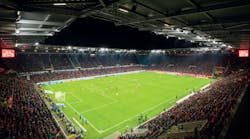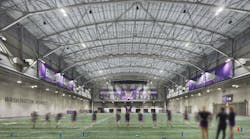"For the first time, we are both slowing down collagen breakdown and building up new collagen with no pain, no redness and no serious side effects," said Robert Weiss, MD, associate professor of dermatology at Johns Hopkins University School of Medicine.
Infrared pain treatment
BioCare Systems of Denver, Colorado, has received clearance from the FDA to market its LED-based PremIR818(TM) Infrared Therapy device for the temporary relief/reduction of minor pain or discomfort associated with muscles including neck and back pain caused by muscle tension, joints, arthritis, sprains and strains.
The system uses low-intensity infrared light from an LED source to stimulate natural biological processes in the area where the light is applied. Referred to as "photobiomodulation" and "photobiostimulation," this process promotes the body's own natural healing and tissue immune responses.
"BioCare has improved upon the proven technology of the science of photobiomodulation and developed a medical device for the consumer market using LEDs in place of laser technology," said Sherry Fox, BioCare's president and CEO. "LED light is safer, less expensive and often as effective as the more highly complex technology used in clinical settings."
BioCare's patented emitter technology uniquely addresses issues of treatment modality, power deposition rate, optimal source wavelength, dosage duration and specific indication parameters. The LED wavelength falls within the optimal range for absorption of light by oxygenated hemoglobin to promote maximal photobiostimulatory effects while still allowing adequate tissue penetration. At the same time, this wavelength is poorly absorbed by water, resulting in little direct heating of tissue, and therefore, minimal risk of heat-induced tissue damage.






